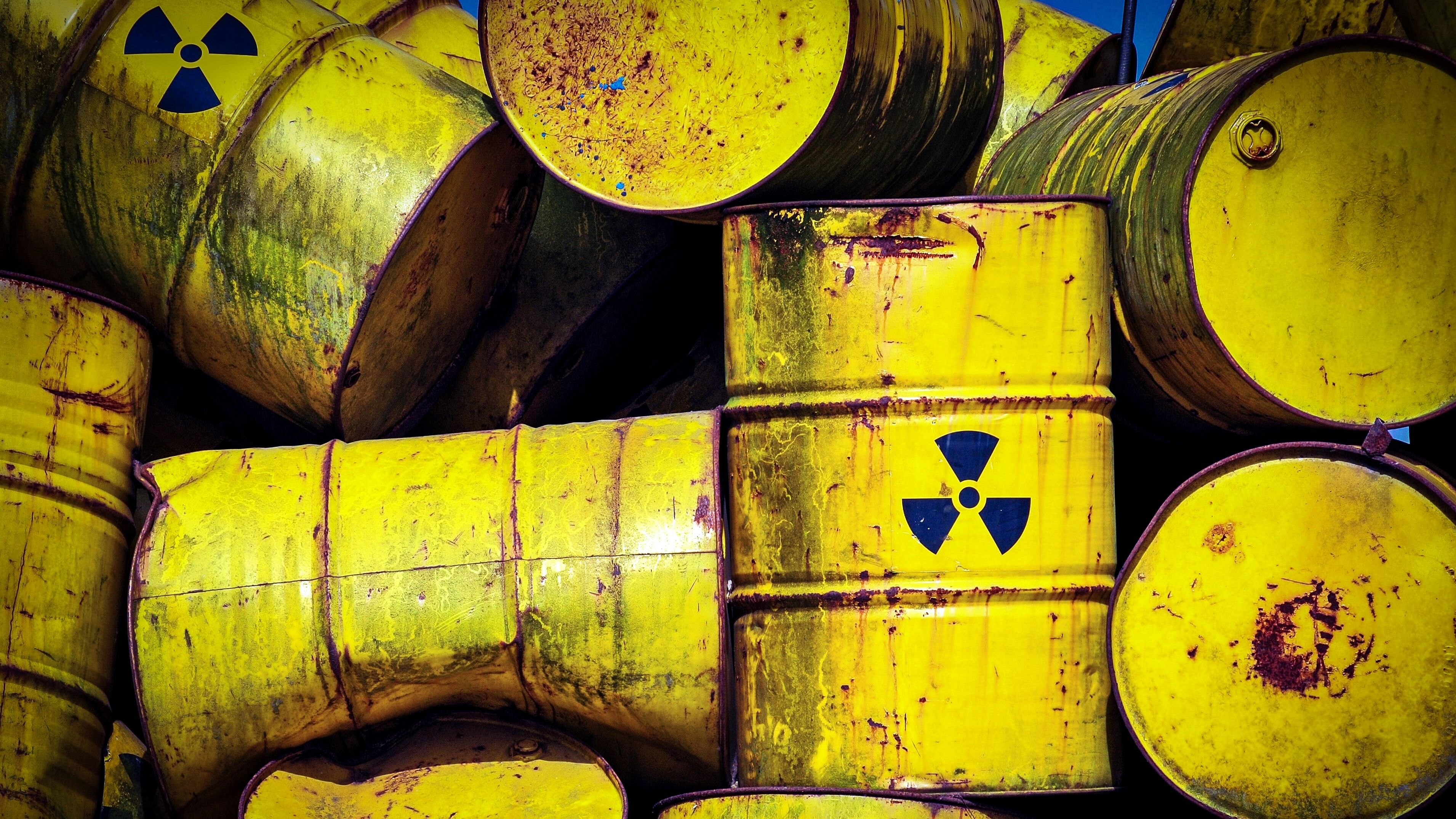
Representative image showing abandoned drums with radioactive warning symbol.
Credit: iStock Photo
By Liam Denning
Among Hurricane Helene’s roster of disasters is a storm surge that deluged a retired nuclear power plant in Florida. While radioactive material there remains secure, according to operator Duke Energy Inc, one of the plant’s industrial wastewater ponds overflowed amid the flood. With luck, any resulting contamination will be minimal.
Even a near miss reminds us that, as with much else, the question of how we handle our industrial dregs is now shaped by climate change.
As my Bloomberg Opinion colleague Mark Gongloff writes, Helene’s shocking destruction in western North Carolina — “a temperate, mountainous place hundreds of miles inland” — mocks the idea of safe havens from the wilder weather that will be unleashed as climate change progresses. This has far-reaching implications for a subject most of us don’t think about, namely waste management. By definition, we expect radioactive waste to be locked away forever. But the same goes for less headline-grabbing forms of pollution like the waste products — known as “tailings” — from mining or the ash from furnaces, where the potential for toxic elements to be released or dam failures must be guarded against in perpetuity.
By coincidence, even as Duke was assessing the flooded Crystal River nuclear site, several Alaska Native communities scored a partial victory in a battle over the waste from another giant industrial project, the Donlin gold mine, on the opposite side of the US.
Expected to produce a million ounces per year, Donlin would be one of the largest gold mines in the world. The associated slurry of water and tailings, containing the likes of arsenic and antimony, is to be contained behind a dam 471 feet high, equivalent to a 40-plus story building. The site is close to the Kuskokwim River, a major waterway supporting hunting, fishing and transportation in southwestern Alaska. It is a region that, as it is, exists on the edge — of the map, of American consciousness, of subsistence. When I visited in the summer of 2023, villages downstream were struggling already with collapsing salmon runs. They justifiably fear the added risk of a dam breach at Donlin, potentially wreaking physical destruction on nearby communities and polluting waters that must feed families all the way to the Bering Sea for generations to come.
In granting permits, federal agencies considered a potential breach scenario whereby just 0.5 per cent of the Donlin tailing facility’s capacity spills out. The communities opposing the mine commissioned an analysis by an environmental consultancy finding that, based on historical dam disasters, a hypothetical failure at the Donlin facility could release between 11 and 80 times the amount considered in the project’s environmental impact study. For example, when the dam at the Mount Polley copper-gold mine in British Columbia, Canada, failed a decade ago, almost a third of its stored volume was released. When Brazil’s Córrego do Feijão dam failed in 2019, 80 per cent spilled.
On Monday evening, the judge ruled that federal officials violated the National Environmental Policy Act by excluding more catastrophic spill scenarios from their analysis, effectively putting the onus on them to conduct a wider analysis. “Tailings dam failure is something I like to term as a low-probability, high-consequence event,” says David Chambers, founder of the Center for Science in Public Participation, a nonprofit that advises public interest groups and tribal governments on mining and water quality. He says focusing too much on the low-probability side of that equation is “like saying we’re not going to plan for an earthquake or a flood.”
Think of climate change as a multiplier for the probability side, increasing the chances that extreme weather or some other force of nature will bear down on our most toxic refuse piles. Those in Arctic and sub-Arctic regions are particularly exposed due to faster warming and often more sensitive environments there. One obvious threat concerns the increase in extreme rain events, which can add to saturation of dam structures, thereby potentially compromising them, or contribute to tailings ponds brimming over.
Another is melting permafrost, which can destabilize structures of all kinds. Oil sumps dug into the permafrost to store drilling waste around Canada’s Mackenzie Delta have been degrading for years as the frozen soil thaws, leaching chemicals into nearby waterways. A study published last year in Nature estimated that there are 4,500 industrial sites handling or storing contaminated material spread around the permafrost-dominated parts of the Arctic, along with up to 20,000 associated contaminated sites, many at risk as melting gathers pace this century.
Wildfire is another threat that will be turbocharged by climate change and occurs both within the Arctic and far beyond. In March, a wildfire in Texas forced the temporary shutdown of a plant that builds and breaks down nuclear weapons as well as storing nuclear material. As a whole, the US still lacks a centralized storage facility for high-level radioactive waste, despite designating Yucca Mountain in Nevada for that role almost four decades ago.
Flooding, subsidence, fire — all things for which we routinely take out insurance. Likewise, the dams, ponds, and containment vessels isolating industrial waste represent insurance against potential catastrophes. A flooded old nuclear site in Florida and a fight over a dam in Alaska are reminders that, as it is, we don’t always invest enough time and money in ensuring such infrastructure can deal with what nature throws at it over the very long term. Climate change will only raise the premiums further.